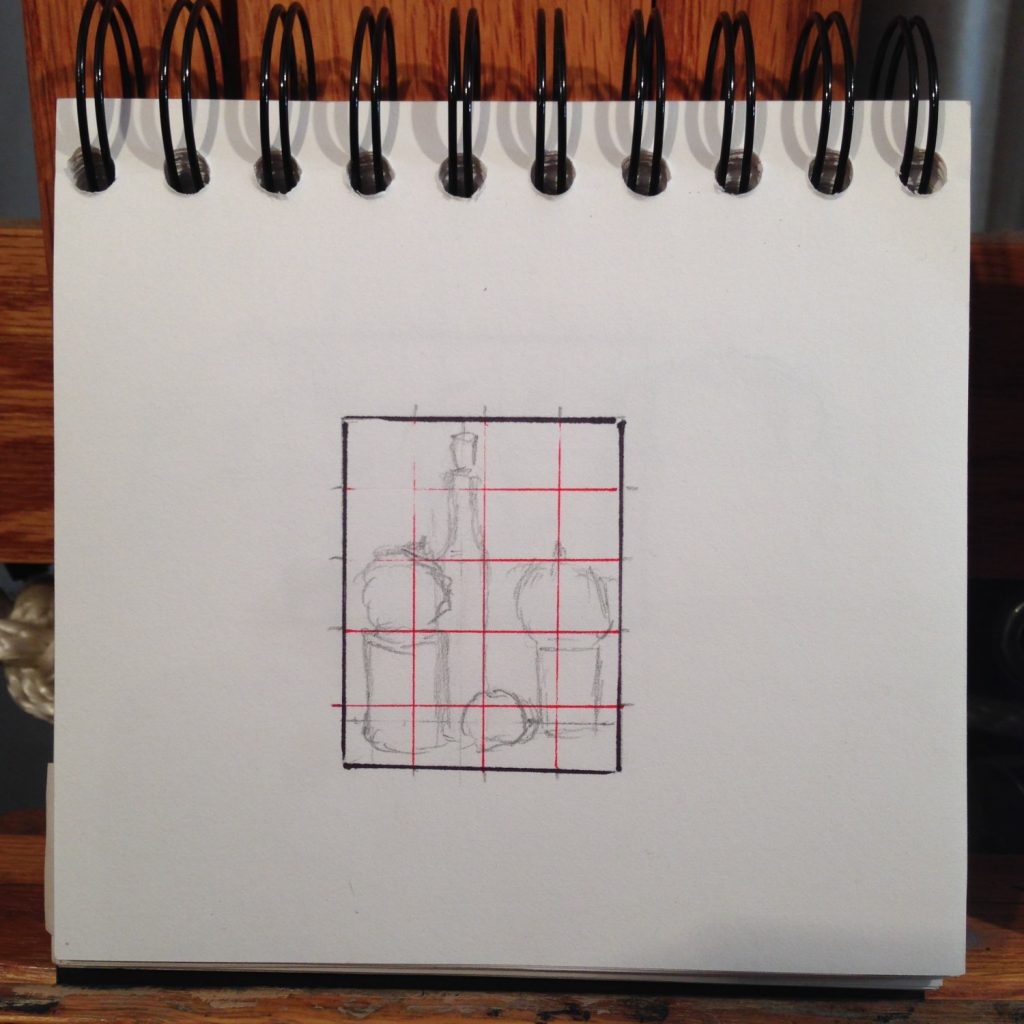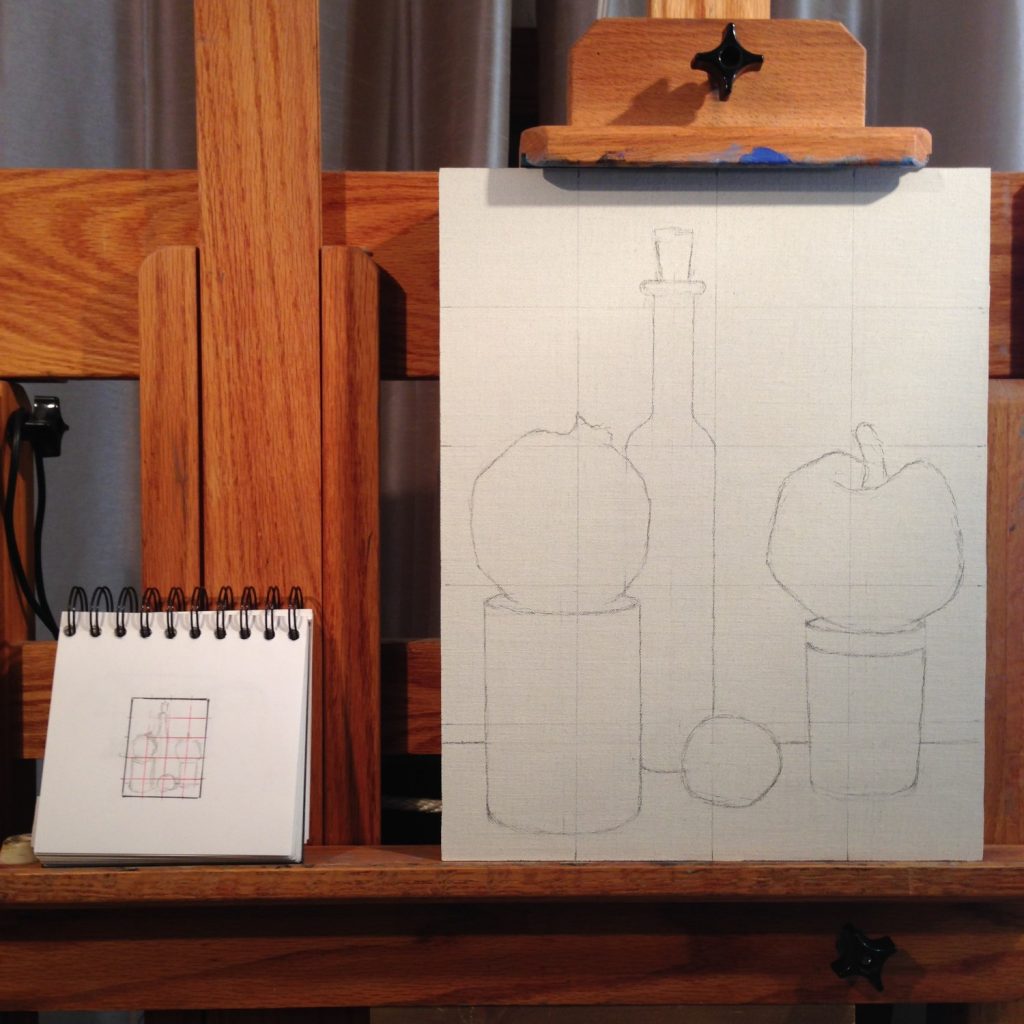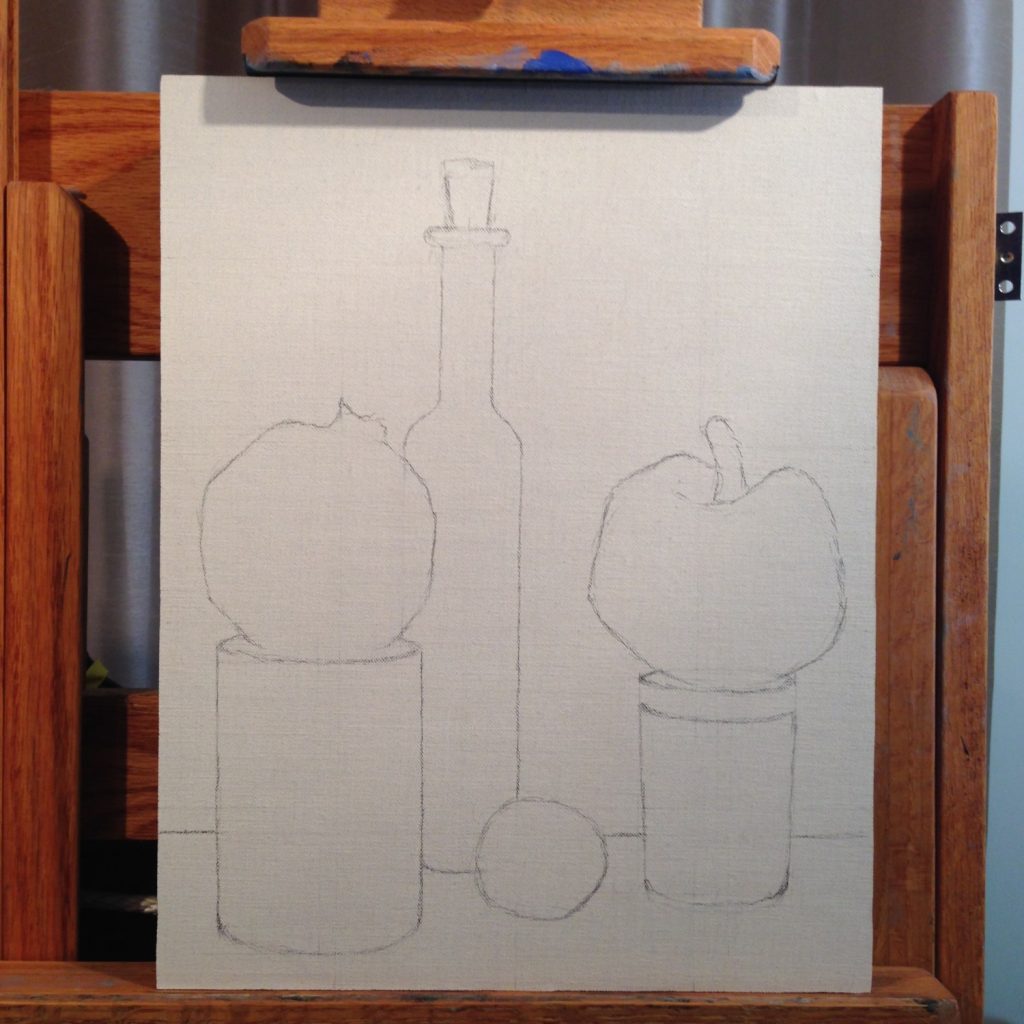Most of my recent paintings have been in either a square or horizontal (landscape) format. This week I’m working with a composition that’s strongly vertical, and will be painting on a 14×11 inch panel. The video above shows the model I’m working from and discusses transferring the image to the panel.
Once I’ve made a thumbnail sketch to establish the rough composition, I need to transfer it to the panel. Freehand drawing is actually a difficult and laborious process. Many distortions can be introduced when drawing freehand. Sometimes these are so subtle that the artist becomes accustomed to them, yet a viewer seeing the work for the first time might instantly notice.
Since this drawing is purely utilitarian, and will be quickly covered up, I want to do it as quickly and accurately as possible. A grid transfer makes this very easy. On top of the thumbnail sketch, I draw a grid – in this case 5×4:

A 5×4 grid is then applied to the panel. I do this very lightly so it can be erased once the transfer is complete:

It’s then a simple matter of copying the information in each square of the thumbnail grid onto the panel grid. Whereas copying one large image is fraught with difficulties, copying 20 small images is actually quite simple, and results in an accurate transfer. It’s also fast – it only took me about 15 minutes to do the transfer.
Another important benefit is that it helps keep lines straight and true. When working freehand, slants and distortions are common, and often easy to overlook. The grid, however, offers a clear background of straight lines, making it quite easy to keep shapes and lines in the drawing correct. For instance, notice above that the outline for the small mason jar at right is not true – the right side slants at a different angle than the left. With the grid in place, it was simple to see this distortion and fix it.
Now that corrections are made and the grid erased, I can begin the underpainting:
